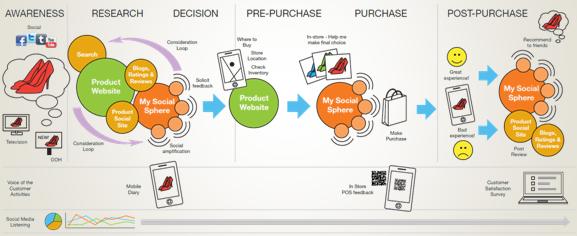 At Delvinia we often study and produce customer journey maps, which visualize customer needs, processes and perceptions in a given exchange, from awareness to post-purchase reflection. The graphics are very effective in delivering insights into the current customer journey in a manner that is both powerful and relatable.
At Delvinia we often study and produce customer journey maps, which visualize customer needs, processes and perceptions in a given exchange, from awareness to post-purchase reflection. The graphics are very effective in delivering insights into the current customer journey in a manner that is both powerful and relatable.
But there’s the rub. Too often we see customer journey maps that are stuck in the present. They stop at explaining what’s happening today. At Delvinia we believe, however, that to create a truly innovative customer experience for the future, you need to look beyond the frame of the transaction.
We see two more factors as important in influencing the customer experience. The first is barriers to the satisfaction of needs. What’s standing between you and your customers? Is it an obstacle that your organization can readily address? For example, how is your retail space organized? Is there a sufficient variety of spaces to accommodate the diversity of shoppers and their shopping styles? Or is the barrier outside of your store? For example, what do you know about what your customers are doing immediately before and after their visit? What other demands in their lives are competing for the same time and attention you need to make a potentially complex sale? Can you have a positive, perhaps indirect, influence there?
The second key factor is feelings. We’re not talking about brand perceptions here, or satisfaction, but the deeper, often hidden emotive drivers. For example, to what extent do your customers feel concerned about appearing uninformed when engaged in your product category? How do these feelings influence their choice of channel at each stage of the purchase process? What does a successful, satisfying purchase really mean to them? For some it may be feeling like they got a deal, while for others it may be a sense of relief and security associated with the purchase.
With an understanding of barriers and feelings in the path to purchase, you can move from thinking solely about the journey to the experience as a whole. Now you have a very generous canvas on which to paint a picture of how technology can support both you and your customer not only today, but tomorrow as well.